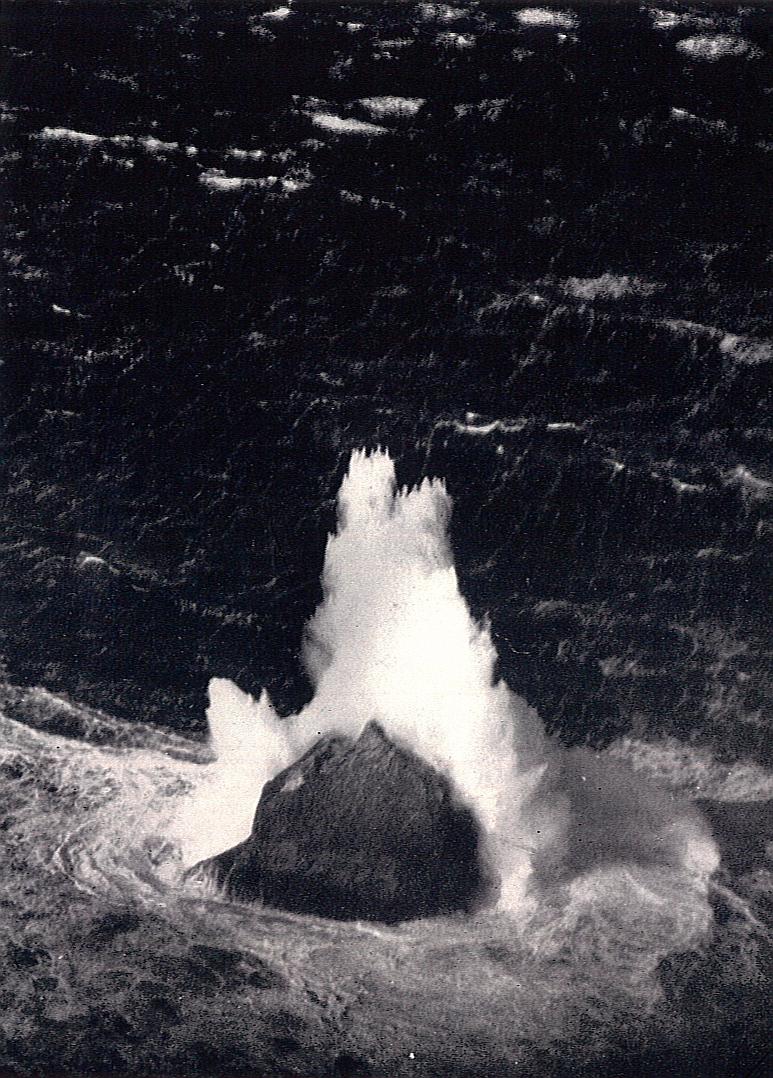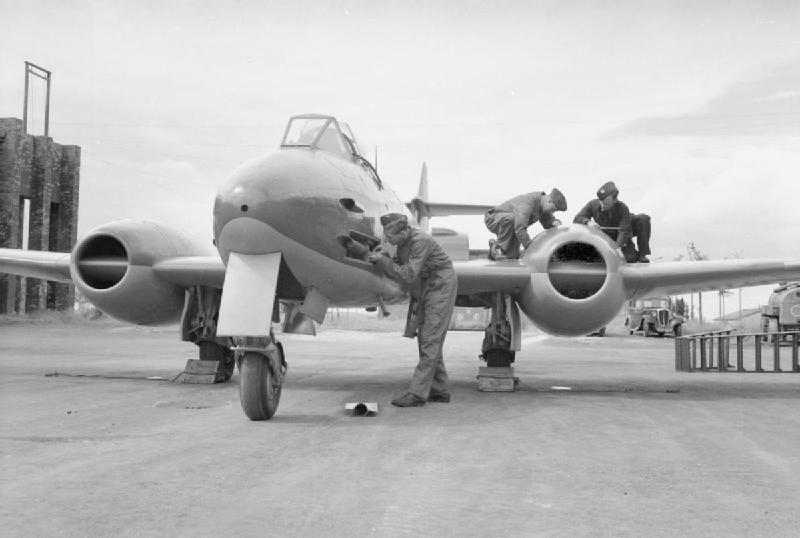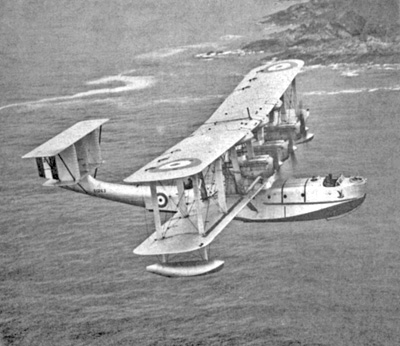|
Vickers Virginia
The Vickers Virginia was a biplane heavy bomber of the British Royal Air Force, developed from the Vickers Vimy. Design and development Work on the Virginia was started in 1920, as a replacement for the Vimy. Two prototypes were ordered on 13 January 1921 and another two prototypes were ordered in September 1922.Jarrett ''Aeroplane Monthly'' May 1993, p. 25. The Virginia was similar to the Vimy but notably had a lowered front gunner's pulpit to allow the pilot a greater field of view, 20 ft (6 m) greater wingspan and a 9 ft (3 m) longer fuselage. The aircraft was powered by twin Napier Lion engines and flew for the first time on 24 November 1922.Andrews and Morgan 1989, p. 131. At the Aircraft Experimental Establishment at RAF Martlesham Heath, the Virginia prototype underwent type trials. One of the first modifications was to replace the original two-bladed propellers with four-bladed propellers. An unusual set of "fighting top" turrets were added to the t ... [...More Info...] [...Related Items...] OR: [Wikipedia] [Google] [Baidu] |
WikiProject Aircraft
A WikiProject, or Wikiproject, is a Wikimedia movement affinity group for contributors with shared goals. WikiProjects are prevalent within the largest wiki, Wikipedia, and exist to varying degrees within Wikimedia project, sister projects such as Wiktionary, Wikiquote, Wikidata, and Wikisource. They also exist in different languages, and translation of articles is a form of their collaboration. During the COVID-19 pandemic, CBS News noted the role of Wikipedia's WikiProject Medicine in maintaining the accuracy of articles related to the disease. Another WikiProject that has drawn attention is WikiProject Women Scientists, which was profiled by ''Smithsonian Magazine, Smithsonian'' for its efforts to improve coverage of women scientists which the profile noted had "helped increase the number of female scientists on Wikipedia from around 1,600 to over 5,000". On Wikipedia Some Wikipedia WikiProjects are substantial enough to engage in cooperative activities with outside organization ... [...More Info...] [...Related Items...] OR: [Wikipedia] [Google] [Baidu] |
Armstrong Whitworth Whitley
The Armstrong Whitworth A.W.38 Whitley was a British medium bomber aircraft of the 1930s. It was one of three twin-engined, front line medium bomber types that were in service with the Royal Air Force (RAF) at the outbreak of the Second World War. Alongside the Vickers Wellington and the Handley Page Hampden, the Whitley was developed during the mid-1930s according to Air Ministry Specification B.3/34, which it was subsequently selected to meet. In 1937, the Whitley formally entered into RAF squadron service; it was the first of the three medium bombers to be introduced. Following the outbreak of war in September 1939, the Whitley participated in the first RAF bombing raid upon German territory and remained an integral part of the early British bomber offensive. In 1942 it was superseded as a bomber by the larger four-engined " heavies" such as the Avro Lancaster. Its front-line service included maritime reconnaissance with Coastal Command and the second line roles of glider- ... [...More Info...] [...Related Items...] OR: [Wikipedia] [Google] [Baidu] |
RAF Driffield
Royal Air Force Driffield or RAF Driffield is a former Royal Air Force station in the East Riding of Yorkshire, in England. It lies about south-west of Driffield and north-west of Beverley. It is now operated by the Defence Infrastructure Organisation, as the Driffield Training Area. History The site was first opened in 1918 by the Royal Air Force under the name of RAF Eastburn, and closed in 1920. In 1935 a new airfield was built, initially training bomber crews. In 1977 the site was turned over to the British Army for use as a driving school, and was renamed Alamein Barracks, a satellite to Normandy Barracks of the Defence School of Transport at Leconfield. The station was the initial posting of Leonard Cheshire VC, who was at that time a member of 102 Squadron. On 15 August 1940 there was a German air raid on the airfield. Casualties included the first fatality in the Women's Royal Air Force The Women's Royal Air Force (WRAF) was the women's branch of the Royal Ai ... [...More Info...] [...Related Items...] OR: [Wikipedia] [Google] [Baidu] |
RAF Aldergrove
Joint Helicopter Command Flying Station Aldergrove or more simply JHC FS Aldergrove is located south of Antrim, Northern Ireland and northwest of Belfast and adjoins Belfast International Airport. It is sometimes referred to simply as Aldergrove which is the name of a nearby hamlet. The military flying units share the Aldergrove runways but have their own separate facilities and helipad. The site was formerly RAF Aldergrove, a Royal Air Force station which was in operation between 1918 and 2009. History Inter-war years RAF Aldergrove first opened in 1918 but was not designated as an operational RAF station until 1925. Various squadrons were posted here during this time: * A detachment of No. 4 Squadron RAF between 30 April 1920 and 26 September 1922 again with the Bristol F2B. * No. 2 Squadron RAF initially at full strength between 2 June 1922 and 27 September 1922 and then as an detachment until 17 September 1923 flying the Bristol F2B Fighter. * No. 502 Squadron RAF ... [...More Info...] [...Related Items...] OR: [Wikipedia] [Google] [Baidu] |
RAF Andover
RAF Andover is a former Royal Flying Corps and Royal Air Force station in England, west of Andover, Hampshire. As well as RFC and RAF units, units of the Aviation Section, U.S. Signal Corps, Royal Canadian Air Force, United States Army Air Forces, and the Air Transport Auxiliary were also stationed at the airfield. The airfield has a notable place in history as the site of the first attempt to develop a viable long-range electronic navigation system, during the First World War, and also of the first British military helicopter unit and first European helicopter flying training school, during the Second World War. RAF Andover was also used before and after the Second World War for a variety of other aeronautical research and flight testing. The RAF Staff College, Andover was founded here in 1922, the first college to train officers in the administrative, staff and policy aspects of running an air force. RAF Andover saw action during the Second World War. Corporal Josephi ... [...More Info...] [...Related Items...] OR: [Wikipedia] [Google] [Baidu] |
RAF Boscombe Down
MoD Boscombe Down ' is the home of a military aircraft testing site, on the southeastern outskirts of the town of Amesbury, Wiltshire, England. The site is managed by QinetiQ, the private defence company created as part of the breakup of the Defence Evaluation and Research Agency (DERA) in 2001 by the UK Ministry of Defence (MoD). The base was originally conceived, constructed, and operated as Royal Air Force Boscombe Down, more commonly known as RAF Boscombe Down, and since 1939, has evaluated aircraft for use by the British Armed Forces. The airfield has two runways, one in length, and the second . The airfield's evaluation centre is currently home to Rotary Wing Test and Evaluation Squadron (RWTS), Fast Jet Test Squadron (FJTS), Heavy Aircraft Test Squadron (HATS), Handling Squadron, and the Empire Test Pilots' School (ETPS). History First World War An aerodrome opened at the Boscombe Down site in October 1917 and operated as a Royal Flying Corps Training Depot Station. Kn ... [...More Info...] [...Related Items...] OR: [Wikipedia] [Google] [Baidu] |
RAF Worthy Down
RAF Worthy Down was a Royal Air Force station built in 1918, north of Winchester, Hampshire, England. After it was transferred to Royal Navy control in 1939 as RNAS Worthy Down (HMS Kestrel), the airfield remained in use throughout the Second World War and then housed an engineering school from 1952. The airfield was in use until 1960. The site is now Worthy Down Camp. History The site was first used as a military establishment when the War Office acquired the site for a Wireless and Observers School in 1917 before changing to the school of Army Co-operation in 1918 on the site of the Winchester Racecourse. In 1918 an airfield was built for the Royal Flying Corps (RFC), but before it was completed the RFC was amalgamated with the Royal Naval Air Service to form the Royal Air Force. Nonetheless, the RFC do seem to have operated there to some degree prior to amalgamation, as Lieutenant Harold Percy Dawson, RFC, was killed in an air accident stated to be at Worthy Down on 9 Marc ... [...More Info...] [...Related Items...] OR: [Wikipedia] [Google] [Baidu] |
RAF Bircham Newton
Royal Air Force Bircham Newton or more simply RAF Bircham Newton is a former Royal Air Force station located south east of Docking, Norfolk and north east of King's Lynn, Norfolk, England. History The site was first used during the First World War and received the largest British bomber of the time, the Handley Page V/1500. They would have carried out bombing missions against Berlin but the Armistice was arranged before any missions were actually flown. There were several communication squadrons active at the airfield during 1919. The airfield was equipped with one aircraft repair shed and three double bay general service sheds, although these had been demolished by 1937. It had two Belfast hangars, three C Type hangars, three Bellman hangars and ten Blister hangars. It operated through the Second World War as part of No. 16 Group RAF as part of RAF Coastal Command. No. 206 Squadron RAF was one of the squadrons being based there, on maritime patrol duties. Two satellit ... [...More Info...] [...Related Items...] OR: [Wikipedia] [Google] [Baidu] |
Rolls-Royce Condor
The Rolls-Royce Condor aircraft piston engine was a larger version of the Rolls-Royce Eagle developing up to 675 horsepower (500 kW). The engine first ran in 1918 and a total of 327 engines were recorded as being built. Variants ''Note:'' ;Condor I :(1920-1921) 600 hp, 72 built at Derby. ;Condor IA :Alternative designation for Condor II. ;Condor II :(1921) 650 hp, revised propeller reduction gear ratio, increased compression ratio (5.17:1). 34 built at Derby. ;Condor III :(1923-1927) 650/670 hp, compression ratio 6.5:1, Re-designed connecting rods. 196 built at Derby. ;Condor IIIA :(1925) 650/665 hp. Improved main bearing design and material. ;Condor IIIB :(1930) 650 hp, 0.477:1 reduction gear, re-designed crankcase and crankshaft. ;Condor IV :(1925) 750 hp. Direct-drive, modified engine mounting. 13 built at Derby. ;Condor IVA :(1927) 750 hp. Nine built at Derby. ;Condor V :(1925) As Condor IIIA with two-stage turbocharger. Run but not flown, one built at Derby. ;Condor VI ... [...More Info...] [...Related Items...] OR: [Wikipedia] [Google] [Baidu] |
Henlow
Henlow is a village and civil parish in the Central Bedfordshire district of the county of Bedfordshire, England, about south-east of the county town of Bedford. The name Henlow is believed to derive from the old English ''henna hlaw'', meaning in old English "hill of birds" or “hill frequented by birds”. At the 2011 census the population of the village was 2,253, and 3,815 for the parish. Village Henlow is mentioned (with a degree of dispute recorded) in the Domesday Book. The entry reads: ''Haneslau(ue)/Hanslau(e): Herfast from Nigel d'Aubigny; Hugh from Walter of Flanders; Widder and Bernard from Azelina, Ralph Tailbois' wife (Hugh de Beauchamp claims from her, stating it was never in her dowry); Alric. 2 mills.'' The parish includes RAF Henlow and that part of Henlow Camp situated east of the A600 road. While RAF Henlow is located near Henlow, it is nearer to the village of Stondon. The civilian settlement of Henlow Camp Henlow Camp is a village in Bedfordshire, Eng ... [...More Info...] [...Related Items...] OR: [Wikipedia] [Google] [Baidu] |
Vickers Victoria
The Vickers Type 56 Victoria was a British biplane freighter and troop transport aircraft used by the Royal Air Force. The Victoria flew for the first time in 1922 and was selected for production over the Armstrong Whitworth Awana. Design and development The Victoria was a twin-engined biplane transport with a conventional landing gear with a tailskid. The design mated a similar fuselage of the earlier Vernon transport with the wing of the Virginia bomber, which was developed in parallel. It was also powered by two Napier Lion engines. The enclosed cabin had room for 24 troops on collapsible canvas seats arranged along the sides of the fuselage. In April 1921 two prototypes were ordered by the Air Ministry to Specification 5/20. The first prototype, allocated serial number ''J6860'', was built as a Type 56 and designated a Victoria I, the second ''J6861'' was built as a Type 81 Victoria II. The Type 56 had two Napier Lion engines with large frontal radiators and were fitted ... [...More Info...] [...Related Items...] OR: [Wikipedia] [Google] [Baidu] |
Inflight Refueling
Aerial refueling, also referred to as air refueling, in-flight refueling (IFR), air-to-air refueling (AAR), and tanking, is the process of transferring aviation fuel from one aircraft (the tanker) to another (the receiver) while both aircraft are in flight. The two main refueling systems are ''probe-and-drogue'', which is simpler to adapt to existing aircraft, and the ''flying boom'', which offers faster fuel transfer, but requires a dedicated boom operator station. The procedure allows the receiving aircraft to remain airborne longer, extending its range or loiter time. A series of air refuelings can give range limited only by crew fatigue/physical needs and engineering factors such as engine oil consumption. As the receiver aircraft can be topped up with extra fuel in the air, air refueling can allow a takeoff with a greater payload which could be weapons, cargo, or personnel: the maximum takeoff weight is maintained by carrying less fuel and topping up once airborne. Aerial ... [...More Info...] [...Related Items...] OR: [Wikipedia] [Google] [Baidu] |





345.jpg)
